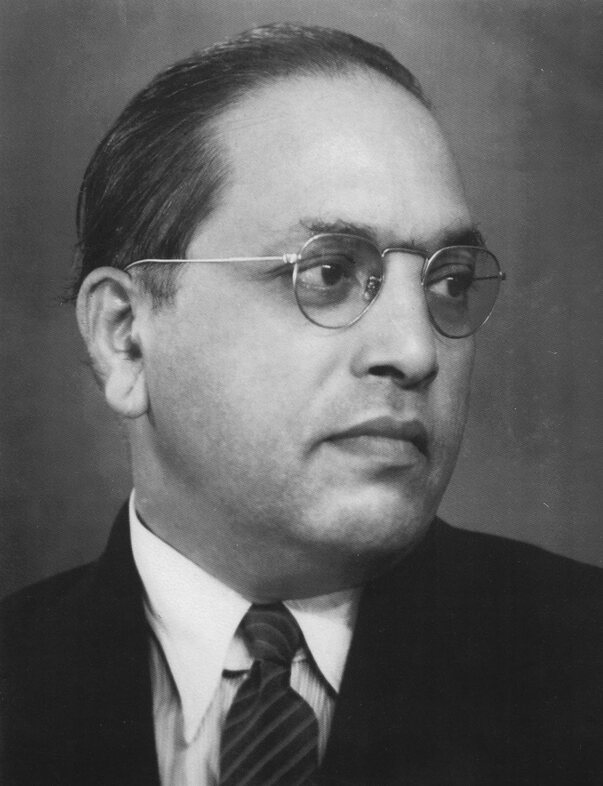Celebrating 75 years of Independence – Azadi Ka Amrit Mahotsav — it is imperative to remember the outstanding and distinctive contribution of Dr. B.R Ambedkar as a prominent social reformer, the country’s first Law Minister and the brain behind the Indian Constitution. Such is his global acclaim that the British Columbia province of western Canada is celebrating his 130th birth anniversary as Equality Day.
Paying his respects, Prime Minister, Narendra Modi, tweeted: "His struggle to bring the deprived section into the mainstream will remain an example for generations to come."
भारत रत्न डॉ. बाबासाहेब अम्बेडकर को उनकी जयंती पर शत-शत नमन। समाज के वंचित वर्गों को मुख्यधारा में लाने के लिए किया गया उनका संघर्ष हर पीढ़ी के लिए एक मिसाल बना रहेगा।
I bow to the great Dr. Babasaheb Ambedkar on #AmbedkarJayanti.
— Narendra Modi (@narendramodi) April 14, 2021
As a distinguished public figure, Ambedkar was not just a reformer and a leading jurisprudence expert but much more.
Tough childhood
Born in 1891 in Mhow, Ambedkar was the 14th and last child of Ram Maloji Sakpal and Bhimbai Sakpal. His father was an Army officer who held the position of Subedar. As a Mahar (dalit) caste, his family was treated as untouchables and subjected to socio-economic discrimination.
Allowed to attend school, he along with other untouchable children were kept separate and hardly attended to by the teachers. They were not allowed to sit in the classroom, and when they required water, a higher caste person had to pour it for them, that too from a height! The school peon used to do this task and as mentioned by Ambedkar in his writings “No peon, No Water.” He says in the absence of the peon, he went thirsty.

Dr. Ambedkar with his teachers and friends (Pic: Courtesy Wikimedia Commons)
Toiling hard, by 1912 Ambedkar obtained his degree in economics and political science from Bombay University and the next year moved to Columbia University to get an MA with economics as the major subject. In 1916 he enrolled for the Bar course at Gray’s Inn and also London School of Economics. Returning since his scholarship had ended, he went back and in 1923 completed a D.Sc in economics and was called at the Bar by Gray’s Inn.
Fight against untouchability
Despite his high qualifications, Ambedkar still faced discrimination. Working as a private tutor, accountant and teaching political economy at Sydenham College of Commerce and Economics in Mumbai, he was looked down upon.
Arguing for separate electorates and reservation for untouchables and other religious communities, he started practising law and tried promoting education among untouchables. He launched movements to throw open Hindu temples and public drinking water sources for untouchables. He launched the Kalaram Temple movement after three months of preparation with nearly 15,000 volunteers staging a satyagraha there.
Laying the foundation of independent India
Following independence, Ambedkar was invited to become the country’s first Law Minister which he accepted and in August that year he was appointed as the Chairman of the Constitution Drafting Committee, and was tasked by the Assembly to write India's new Constitution.

Dr. Ambedkar presenting the final draft of the Constitution to the President Dr. Rajendra Prasad (Pic: Courtesy Wikimedia Commons)
The Ambedkar drafted Constitution was described by Granville Austin as “first and foremost a social document”. In “The Indian Constitution: Cornerstone of a Nation” Austin states: “The majority of India's constitutional provisions are either directly arrived at furthering the aim of social revolution or attempt to foster this revolution by establishing conditions necessary for its achievement.”
The text prepared by Ambedkar touched on several prominent aspects. These included constitutional guarantees and protections for a wide range of civil liberties for individual citizens, including freedom of religion, the abolition of untouchability, and the banning of all forms of discrimination. His arguments got the Assembly’s approval for a system of reservation of jobs in the civil services, schools and colleges for members of Scheduled Castes and Scheduled Tribes and Other Backward Class – reflecting an affirmative action to root out untouchability. The sacred document of independent India was adopted on November 26, 1949 by the Constituent Assembly.
Institution builder
Playing a pioneering role, Ambedkar was instrumental in setting up a number of institutions. The Hilton Young Commission’s report on which the Reserve Bank of India was conceptualised had taken into account his guidelines prescribed in “The Problem of the Rupee: Its Origin and Its Solution”.
He was responsible for an all-India policy regarding development of water and electric power resources of India; the creation of the Central Waterways. Irrigation and Navigation Commission, now known as the Central Water Commission and the Central Technical Power Board, now known the Central Electricity Authority.

Dr. Ambedkar's statue in the Parliament
Besides he played a major role in adoption of the concept of River Valley Authority or Corporation for the integrated development of the rivers in their region, introduction of the concept of multipurpose development of river valley basin and initiation of some important river valley projects, particularly in Damodar, Sone and Mahanadi river basins.
Ambedkar established the Finance Commission of India in 1951 and vehemently opposed income tax for low-income groups.
Not only during his lifetime but also later Ambedkar has had a deep impact on the social, political and economic fabric of India. While his views are respected across the political spectrum, his action and argument for affirmative action in rooting out social and economic inequalities has played a vital role in making what India is today!




















